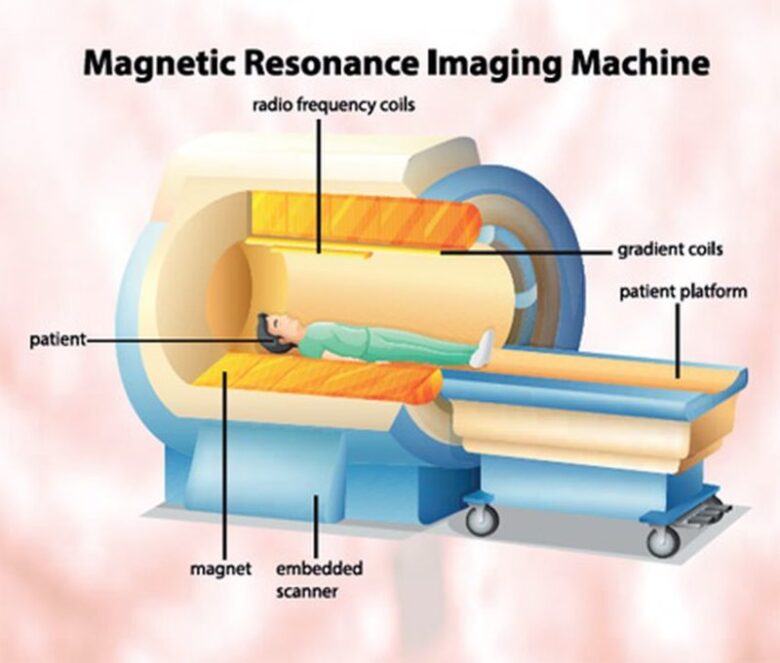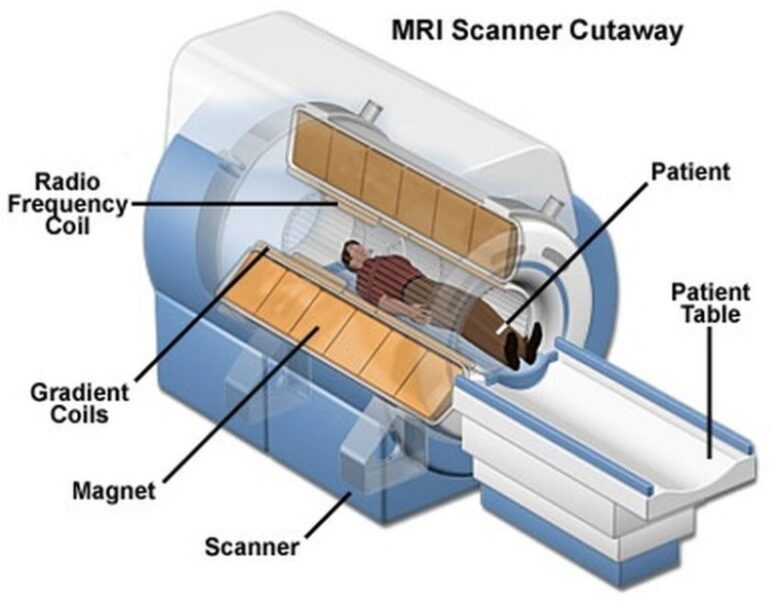An MRI or Magnetic Resonance Imaging Scanner is an incredible healthcare machine that allows specialists to obtain a detailed snapshot of the internals of their patients. The machine uses extremely strong magnetic fields and radio waves in order to generate these detailed images that can be used to determine treatment areas and the type of treatment that is best suited for the patient.
What is an MRI Scanner
The design of the MRI scanner can be likened to that of a very large doughnut and can be used to scan any part of the body, from the brain to muscle tissues to bones and joints and even blood vessels. It has numerous applications and is an essential part of diagnosing ill health, however it is also an extremely expensive and large piece of kit that can be impractical for smaller hospitals that don’t see a lot of patients come through.

source:pixabay.com
The results of MRI scans are regularly used with cancer treatments to plot the best type of delivery, whether this is surgery, radiotherapy, proton beam therapy or immunotherapy, to name a few options. Alternatively, MRI scanners can also be used to check if a previous procedure or treatment has been effective and if further treatment should be allocated to the patient.
How an MRI Scan Works
When going for an MRI scan, the patient must first remove all accessories and inform the care team of any existing conditions that could be affected during the process (such as pregnancy or pacemakers) or irritated by laying still for a long period of time. A hospital gown will be provided for wear during the MRI scan. Once in the room, the patient will be requested to lay down on the scanner bed, with their head or feet facing the scanner, dependent on the body part to be scanned.
The radiographer will then control the motion of the scanner bed as it passes through the MRI scanner. It is imperative that the patient lays still at this time as any movement can affect the clarity and detail of the images being taken. Younger patients can be provided with braces and in some healthcare facilities will be able to “train” with a smaller, dummy scanner that can help encourage them to lay still during the scanning process.
Some private healthcare centres, such as the Rutherford Cancer CentreNetwork, you can check out the website if you click here, have designed and built their MRI scanner rooms to offer comforting distractions to their patients. Incorporating inbuilt mood lighting that allows for the theme of the room to be adjusted and projectors available to play short film clips or soothing and colourful visualizations. Due to the noise of the MRI scanner, it’s most common for patients to be provided ear protectors or headphones in order to ensure comfort and prevent damage to hearing.
What to Expect During an MRI Scan
Going for an MRI can be a scary experience, not only for the health conditions it may be looking for or the type of treatment it might lead to but the machines are quite large and many patients are worried about the scanning process. While it is not uncommon for patients to feel mild claustrophobia, it’s important to remember the MRI support team are there for the patient’s well-being and will do their utmost to ensure the patient is calm, secure and comfortable before undergoing the scanning process.

source:pixabay.com
If you are a patient that has been recommended for an MRI Scan, discuss with your radiologist any concerns you may have regarding the process and they will be able to talk you through and alleviate any worries. Where possible, you may be able to request going in feet first, as this can help feel patients less nervous during the process. It can also help to reduce stress about a situation by informing yourself and remind yourself that the MRI Scanner will be able to intricately detail your ailments to ensure you undergo the best type of treatment and return to a clean bill of health.

